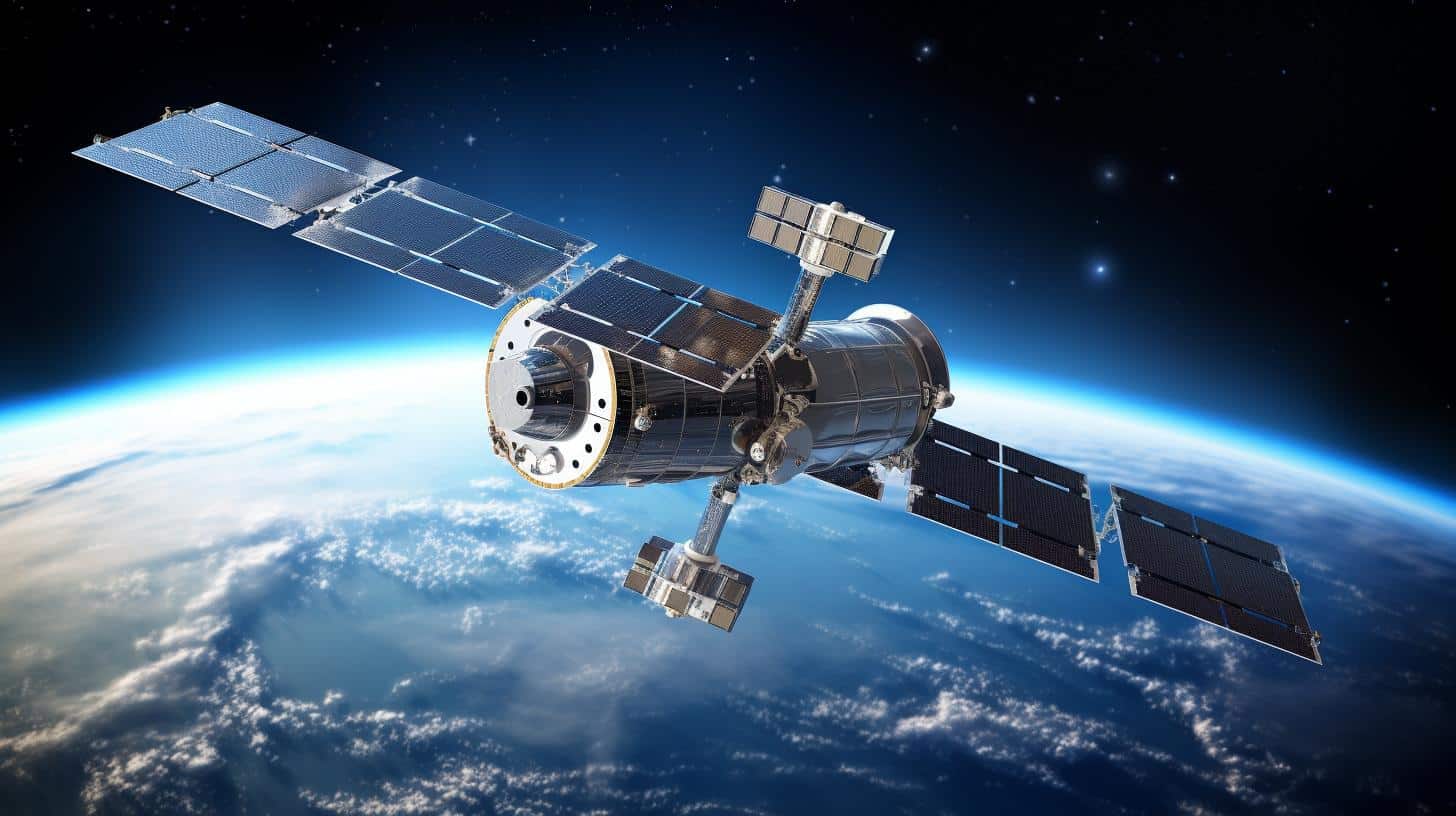Space exploration and satellite technology have become integral parts of our modern world. However, the process of flying a satellite involves much more than just launching it into space. There are various stages and key terms that investors and enthusiasts should be familiar with. In this article, we will explore the journey of a satellite, from licensing and design reviews to decommissioning. Understanding these steps will provide a comprehensive view of the complexities involved in satellite operations.
A Close Up Look at Intelsat’s IS-10-02 Satellite as MEV-2 Approached for Docking in Orbit:
Intelsat’s IS-10-02 satellite was the center of attention as the MEV-2 (Mission Extension Vehicle) approached for docking in orbit. This satellite, launched in 2004, is one of Intelsat’s fleet of geostationary communication satellites. It provides crucial services such as broadband connectivity, television distribution, and mobile communication across Europe, Africa, and the Middle East. The MEV-2, developed by Northrop Grumman, is an innovative spacecraft that extends the operational life of satellites by docking with them and providing propulsion and attitude control. The successful docking of the MEV-2 with the IS-10-02 satellite demonstrates the advancements in satellite servicing capabilities and the potential for prolonging the lifespan of crucial space assets.
A Glossary of Key Terms in Flying a Satellite: From Licensing to Decommissioning:
To fully understand the intricacies of satellite operations, it is essential to familiarize ourselves with key terms in the field. These terms include licensing, design reviews, assembly, integration, testing, shipment, processing, launch, deployment and early orbit phase (LEOP), commissioning, orbit raising, operational, and decommissioning. Each step plays a crucial role in ensuring the successful deployment and functioning of a satellite. From obtaining regulatory approval to maneuvering the satellite into its final position, these terms encapsulate the comprehensive journey of a satellite.
Licensing: Gaining Regulatory Approval for Satellite Operations:
Before a satellite can be launched into space, it is essential to obtain regulatory approval, known as licensing. This process involves setting the legal parameters for satellite operations, including the number of satellites in a constellation, their size, capabilities, and operating locations. Regulatory bodies ensure that safety, spectrum allocation, and global coordination guidelines are adhered to. Licensing is a vital step in ensuring the responsible and efficient use of space resources and reducing the risk of collisions or interference with other satellites.
From Design Reviews to Decommissioning: The Sequential Steps in Flying a Satellite:
Flying a satellite involves a sequence of steps that begin with design reviews and continue until decommissioning. Design reviews entail formulating the size, scope, and necessary parts of the satellite. Subsequently, assembly involves ordering, producing, and gathering the components, which are then tested before being assembled into subsystems. Integration connects the satellite bus, which encompasses the spacecraft’s structure, with the payload. The satellite is then subjected to rigorous testing to ensure its survival in the harsh conditions of space. Once tested, the satellite is shipped to the launch site, where it is processed to ensure readiness. The launch, deployment, early orbit phase, and commissioning follow, allowing the satellite to enter its operational stage. Finally, when its life cycle ends, decommissioning determines the fate of the satellite, either through reentry into Earth’s atmosphere or placement in a graveyard orbit to reduce collision probabilities.
The Lifecycle of a Satellite: From Assembly to Decommissioning:
From the moment a satellite is assembled, it goes through various stages until its eventual decommissioning. After assembly, the satellite undergoes testing to ensure its functionality under extreme conditions. Once deemed ready, it is shipped to the launch site and processed for launch. The satellite is then deployed into orbit, initiating the early orbit phase, followed by the commissioning stage, where all systems are thoroughly tested. Orbit raising maneuvers the satellite to its final position, and it enters the operational stage, providing essential services such as communication, imaging, and weather monitoring. Eventually, the satellite reaches the end of its operational life, and decommissioning ensures safe disposal to minimize space debris and potential collisions.
The journey of a satellite is a complex and meticulously planned process involving numerous stages and terms. From obtaining regulatory approval to its eventual decommissioning, each step contributes to the successful deployment and operation of a satellite. As technology advances, satellite servicing capabilities, such as the docking of MEV-2 with Intelsat’s IS-10-02, demonstrate innovative solutions for extending the lifespan of satellites. Understanding the key terms and sequential steps involved in flying a satellite is crucial for investors, enthusiasts, and industry professionals alike, as it provides valuable insights into the fascinating world of satellite operations.
Analyst comment
Neutral news. The article provides information about the journey of a satellite, from licensing to decommissioning, and the advancements in satellite servicing capabilities. The market is expected to continue growing as the demand for satellite services increases. Investors and industry professionals can gain valuable insights into the complexities of satellite operations.













